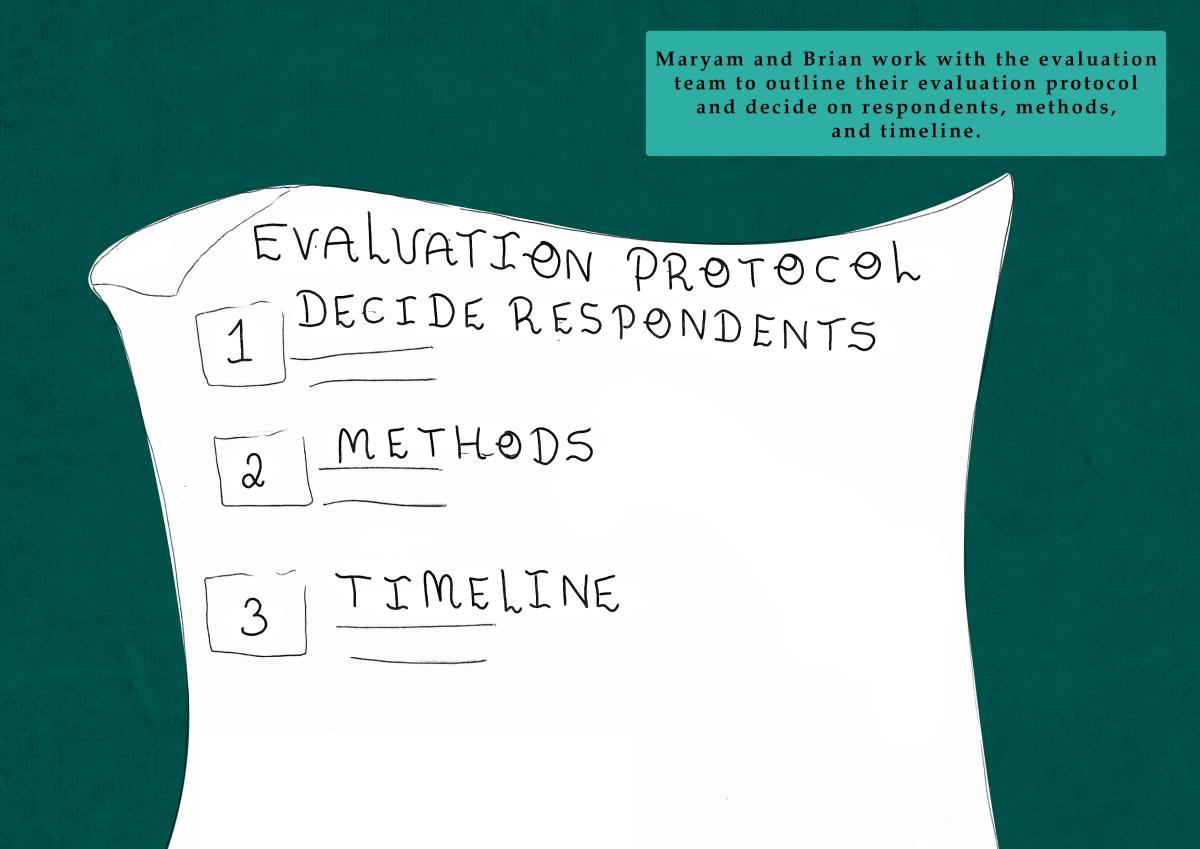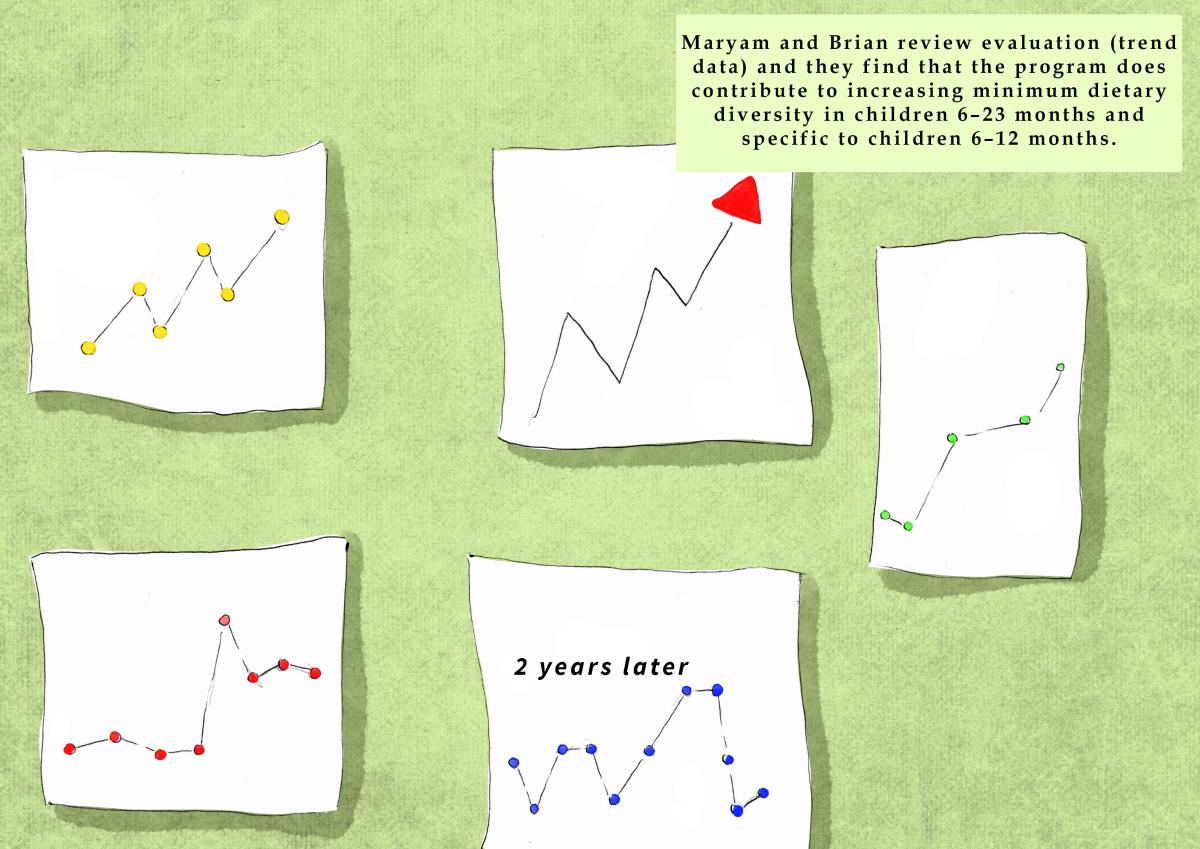Use your MEL plan and USAID Advancing Nutrition’s guide for evaluators to carry out the evaluation.
6.1 Form the evaluation team.
Often, evaluations are conducted by evaluators who are not members of the project team, which strengthens the credibility of the evaluation. It is important that the evaluation team offers skills that demonstrate their familiarity with the project’s goals, pathways, activities, outcomes, and evaluation methods as seen in the Defining SBC Competencies tool.
6.2 Revisit the purpose of the evaluation after starting to implement.
Make sure your design and questions are still the right ones based on what you have learned. Program changes (such as staff or priority changes) may change your evaluation.
6.3 Develop the evaluation protocol.
Outline how the evaluators plan to carry out the evaluation and answer the key evaluation questions. If your program has developed a program impact pathway (PIP) based on your behavioral pathways, it can help you think through how to answer these questions.
Hover over the squares above to see corresponding questions below.
6.3.1 Determine the evaluation sample.
The sample for the evaluation will be guided by the type of evaluation selected and the design of the evaluation questions.
6.3.2 Determine the evaluation data collection methods.
When possible, use mixed methods to answer your key evaluation questions and to triangulate your findings (i.e., use different data sources).
6.3.3 Establish the evaluation timeline.
Because complementary feeding behaviors vary depending on the child’s age and throughout the life of the program, reconfirm which households are eligible to answer the evaluation questions or consider the wording of the survey questions (e.g., depending on the respondent). Also, consider the seasonal availability of the food that is being promoted by the program.
6.4 Support the evaluation process.
As the implementer, you may be supporting the work of the evaluator rather than directly involved in conducting the evaluation:
- Ensure that the evaluator selects (and the program provides access to) representative samples of respondents.
- Beware of unintentionally biasing the results by engaging respondents who will positively or negatively skew the results of the evaluation.
- Encourage engagement with respondents who may not be conveniently located.
6.5 Develop and share recommendations.
Findings can be used to improve the organization’s and stakeholder’s approach to continuing to improve complementary feeding as well as future programs. In the final evaluation report, indicate where changes and actions are recommended as a result of the findings, including where to improve monitoring and evaluation. Make recommendations for future programs and share evaluation findings with communities and partners.







